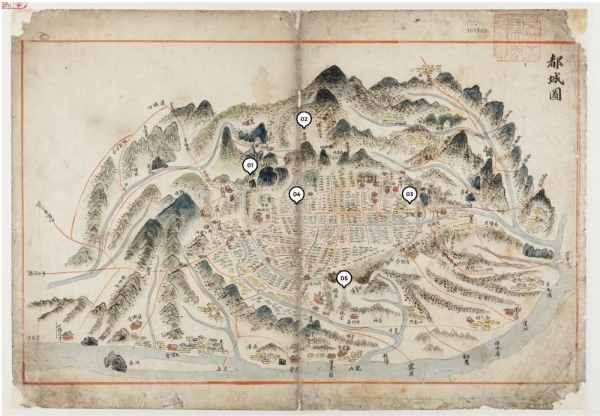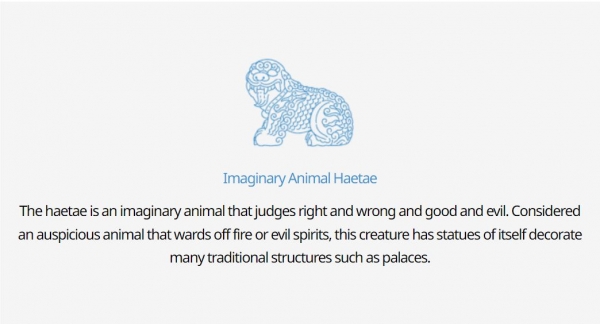Fundamental Energy Flowing through Baekdudaegan
Since ancient times, feng shui (pungsu jiri in Korean referring to Chinese geomancy), has considered the mountain range “paths through which energy flows” in its emphasis on the flow of energy (gi). The fundamental energy flowing down from Baekdusan, the starting point, passes through the mountains of Geumgangsan, Seoraksan, Odaesan, and Songnisan before finally reaching Jirisan.
All of these are collectively referred to as the "great mountain range" of Baekdu (Baekdudaegan). Among the mountains of this range, the Hanbukjeongmaek range splits from the northern watershed of Geumgangsan and encompasses the mountains north of the Hangang River.
Passing through the mountains of Dobongsan and Bukhansan, Bugaksan displays its majesty as the guardian mountain of the capital of Seoul. To cut off this energy, the Japanese colonial government exploited feng shui to its advantage during Japanese occupation of the Korean Peninsula and drove in iron stakes all over the nation’s mountains. Chotdaebawi (Candlestick) Rock on Bugaksan acquired its name when the stakes were removed after Korea’s independence and a candlestick was installed instead to wish for national development. This way, feng shui, which connects the flow of energy and terrain of the land to human fortune, was an important idea that formed the basis of traditional Korean culture.
People built shrines for Four Celestial Guardians in the four directions: Black Warrior in the north, Red Phoenix in the south, Blue Dragon in the east (left), and White Tiger in the west (right). Bugaksan has one of these four shrines. Seoul, the capital of Joseon, was surrounded by four inner mountains—Bugaksan, Inwangsan, Namsan, and Naksan—and four outer mountains— Bukhansan, Deogyangsan, Gwanaksan, and Yongmasan. Usually called Baegaksan during the Joseon period as well as Myeonak (face rock mountain) for resembling a human face, Bugaksan is designated Historic Site No. 10 and Scenic Site No. 67.

Magnificent Guardian of Seoul
Gyeongbokgung Palace has a more magnificent and outstanding presence thanks to Bugaksan, which contains a profound meaning. A power struggle between Buddhism and neo-Confucianism in the early Joseon period ended with the neo-Confucian camp winning. This led to the construction and layout of Hanyangdoseong (Seoul City Wall) and palaces under strict accordance to neo- Confucian interpretations. The exquisite arrangement resulted in one seeing the mountain in the back while facing Gyeongbokgung along with Gwanghwamun Gate and Geunjeongjeon Hall, but as one approaches the towering palace, the mountain disappears from view, leaving just the gate and hall. This was the result of the application of the political philosophy of authority granted by heaven flowing from Bugaksan to the palace. The shift of perspective from the magnificence of the mountain range to that of the palace symbolized the king’s absolute authority as reflected in architectural structure. This is even more apparent when the palace is photographed from up close and afar.

Haetae and South Pond to Deter Fire and Evil Spirits
A haetae (mythical creature that symbolizes the water deity) statue was used as a remedy (C. bibu ) based on feng shui. Gyeongbokgung suffered from frequent small and major fires, and people believed that the cause was the energy of fire embedded in Gwanaksan, one of the four outer mountains of Seoul. So more such statues were erected at the Office of Inspector General on the street of six ministries in front of Gwanghwamun Gate. Namji Pond was dug near Sungnyemun Gate. A pair of haetae is now moved to both sides of Gwanghwamun, from its original location of the Office of Inspector General.


